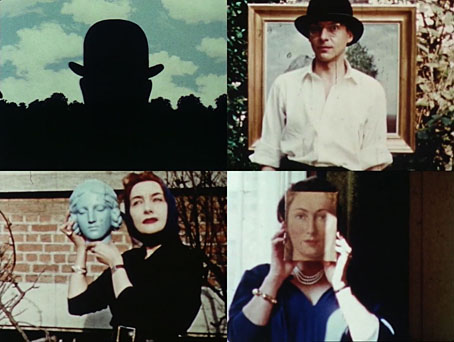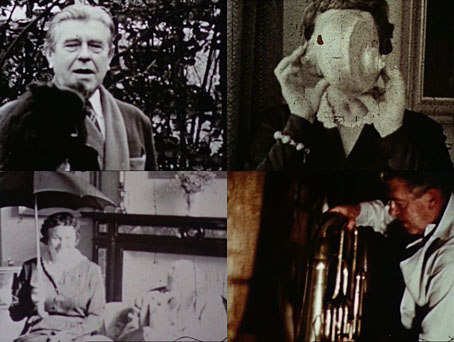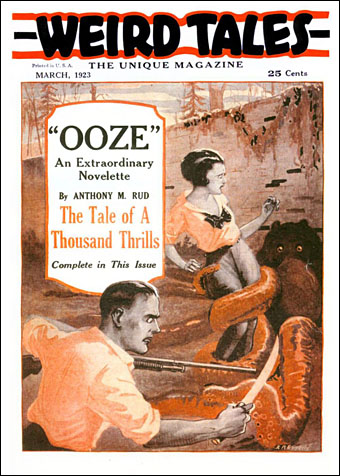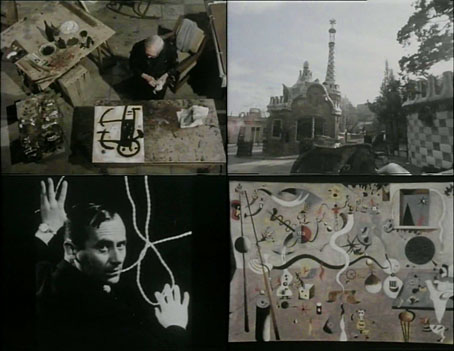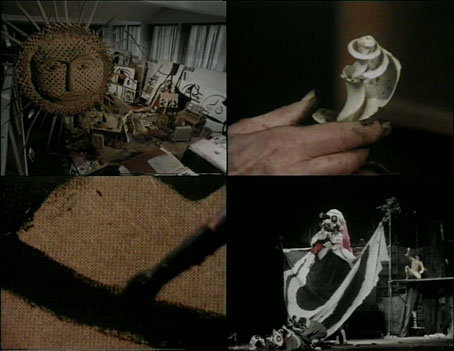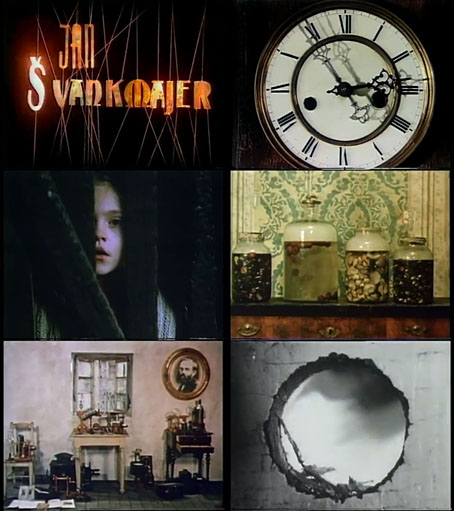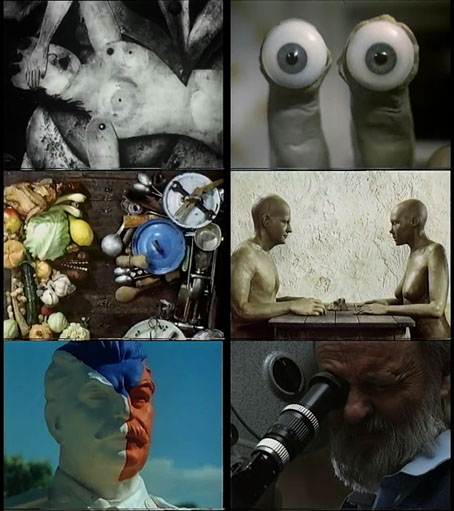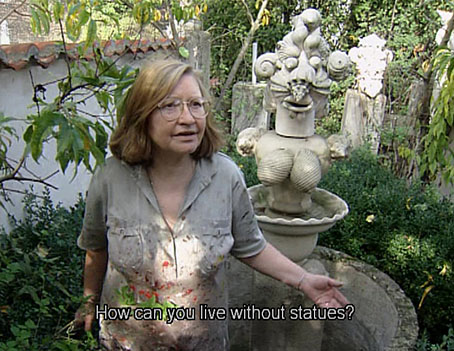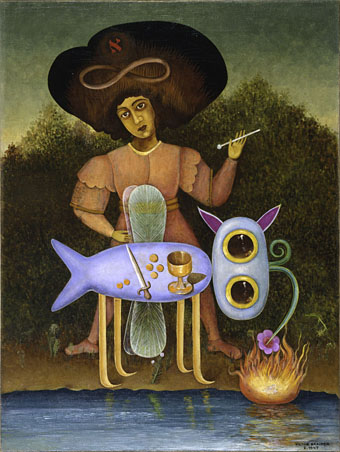The title at the Internet Archive has this one as “Magritte Home Movies” which is a more accurate description than the title of the film itself. René Magritte, Cinéaste was apparently made in 1975 (although the print bears a copyright date for 1989), being a compilation of films from the late 1950s made in and around the Magritte household by René and wife Georgette (plus LouLou the Pomeranian) with contributions from friends in the Brussels art world: ELT Mesens (an artist who was later a member of the British Surrealist Group), Paul Colinet (artist), Louis Scutenaire (poet), Irène Hamoir (writer), Marcel Lecomte (writer), and others.
The film opens with some contextual narration in French but the rest of the footage is soundless with a simple musical accompaniment. As with many home movies there’s a lot of mugging and dressing-up for the camera. What you don’t get in similar films is the setups that involve either quotes of Magritte’s paintings or the paintings themselves. If you’re familiar with the art then some of the props are also familiar, such as the plaster head (or heads) from the various versions of La Mèmoire, and the euphonium which in its painted form Magritte often showed in flames. The most Surrealist sequence is Le Dessert des Antilles, a Cocteau-like experiment with reverse-motion. Where Cocteau preferred to show a flower being pieced together from its constituent parts, Magritte has Irène Hamoir regurgitating a banana, bite by bite, which is then presented unpeeled to her husband, Louis Scutenaire. (This sequence has been flipped horizontally. A duplicate copy here shows the original title card.)
Elsewhere on { feuilleton }
• The Surrealism archive
Previously on { feuilleton }
• Magritte: The False Mirror
• Magritte, ou la lecon de chose
• René Magritte album covers
• Monsieur René Magritte, a film by Adrian Maben
• George Melly’s Memoirs of a Self-Confessed Surrealist
• The Secret Life of Edward James
• René Magritte by David Wheatley

